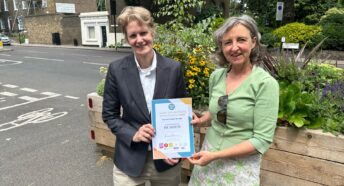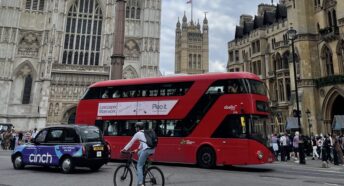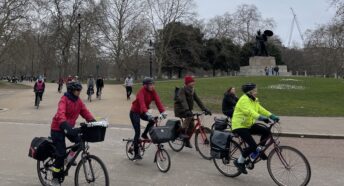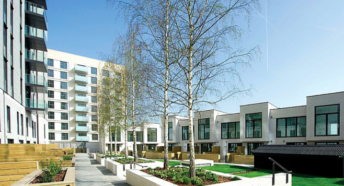Why Parking Matters
Londoners – take action! Whether you’re a driver or not, action on parking can improve your environment and make your roads safer.
Ask your local council to take action on parking today! Check out all the images in our publications Parking Transformed and Parking policy-the case for change to find out how changes to parking can make London a better place. Or you can help with our 2022 campaign by asking your borough to re-assess its parking policy and identify areas for action. In the meantime, here’s why parking matters...
Kerbside parking in London takes up a huge 1,400 hectares of land – or ‘grey space’. That’s the equivalent to 10 Hyde Parks. And that’s just half of all the space given to parking in London. Parking for private cars is a particularly inefficient use of space which in London is much needed for alternative, more useful purposes, such as new parks and housing, wider pavements and bus and cycle lanes.
London has only two thirds of the greenspace it needs for a population its size so we need to find more space for parks and playgrounds. We also need sites for new homes. And since the coronavirus outbreak, it has emerged that only 36% of London’s pavements are wide enough to observe social distancing – a statistic which highlights a bigger problem, namely that space for car parking is disproportionately allocated when compared to pavement space or space for cycle lanes.
Parking has a big impact on road safety. Parked vehicles can impact on safety because they make it hard to see oncoming traffic particularly at junctions. This is not just for pedestrians and cyclists: it is also for drivers. Parked vehicles can also block access for emergency services, utilities and other drivers – sometimes called nuisance or inconsiderate parking.
If parking is unrestricted, more people travel by car and fewer people walk, cycle or take public transport. This means more climate emissions, congestion, air pollution, road danger and noise. But in many London boroughs parking is largely unrestricted and many more trips are made by car than need to be. Depending on how much parking is available, where it is, and how much it costs, parking can either encourage or discourage people from making ‘switchable’ car journeys – those which could readily be made by walking, cycling or public transport. There is a clear link between the amount of car parking available and resulting car-use so it can have a big impact on the amount of climate emissions, congestion, air pollution, road danger and traffic noise.
A disproportionate amount of space is given to private cars when compared to the number of trips by public transport, walking or cycling. In areas where the majority of people do not own a car, where street space is limited or the environment is poor, allocating too much space for parking, or providing car owners with private use of public space, particularly for no charge or at low cost, is unfair to residents who do not own a car.
Action on parking will be needed by the London Boroughs to meet three key targets in the Mayor’s Transport Strategy:
- To increase the trips made by ‘sustainable mode of transport’ (walking, cycling, public transport) from 63% to 80% by 2041
- For everyone to undertake the daily 20 minutes of active travel they need to stay healthy by 2041
- Vision Zero for road danger: the elimination of all deaths and serious injuries on London’s transport system by 2041
Parking detracts from historic settings – making them less attractive. Removing parking can dramatically improve historic settings and other visitor attractions, encouraging visitors to linger.
Parking in town centres and high streets reduces income for local business. Although concern is often raised about the impact on local business of removing parking, evidence shows it actually increases income. It does this because it makes spaces more attractive and pedestrian-friendly, less polluted and safer, so people stay longer and spend more. See Living Streets Pedestrian Pound.








